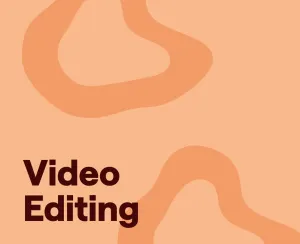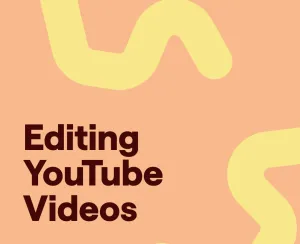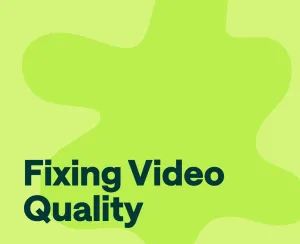With so many brand partnerships, exclusive event invites, and most importantly, the potential for passive income, learning how to become a social media influencer today is more appealing than ever.
The best part? You can focus on anything you truly love—whether it's fashion, fitness, or practically any other niche. So don’t treat it like just another passing thought, learning how to become a social media influencer might just be your best idea yet.
And to help you pursue it, we’ve made an actionable guide that will help you start your social media influencer journey. So let’s get started.
Types of social media influencers
First and foremost, it’s important to understand that not all social media influencers are the same. There are several types of influencers, and understanding the differences can help you figure out where you fit in. Below are the main categories:
1) Nano influencer
A nano influencer typically has a small but highly engaged following, usually between 1,000 to 10,000 followers. These influencers are great at connecting with niche audiences and often have more personal relationships with their followers, making them ideal for smaller, targeted campaigns.
2) Micro influencer
A micro influencer has between 10,000 to 100,000 followers. They’ve grown beyond a tight-knit community but still maintain a strong level of trust and interaction. Micro influencers are often seen as experts in their field and are highly effective at promoting brands within their niche. In that aspect, they're dominating social media.
3) Mega influencer
A mega influencer has a massive following, often exceeding one million followers. These influencers are usually celebrities or public figures who have a broad reach. While they can provide huge exposure, their engagement rates might not be as high as nano or micro influencers due to their enormous audience size.
How to become a social media influencer: 7 key steps to follow
Starting with a blank page is always difficult. But with enough guidance you can make it work.
Here are seven steps to help you build a solid presence in the world of social media.
1) Create an authentic brand identity
Being an influencer is all about authenticity. It’s tempting to mimic what’s already working for others, but if you want to stand out, you need to stay true to who you are.
Your brand identity should reflect your values, interests, and the unique voice you bring to the table. Whether you're into sustainable living, street fashion, or gaming, your brand should clearly represent what you’re passionate about.
This means choosing a consistent color scheme, style, and tone of voice that reflects your personality. Think of it as creating an online version of yourself that people can connect with. After all, the best digital influencers are relatable and authentic, and that’s exactly what will set you apart from the crowd.
2) Choose the right platform
Not all platforms are created equal when it comes to influencer content. Different social media platforms serve different purposes, and understanding which one works best for your brand is crucial. Instagram is great for visual content like fashion, beauty, and travel, while YouTube is perfect if you prefer creating long-form video content. TikTok, on the other hand, is all about short, engaging videos and has become a favorite for influencers focusing on trends, humor, or creative challenges.
It’s okay to explore multiple platforms, but it’s smart to start by focusing on one or two where your target audience is most active. This allows you to perfect your content for that platform, which will increase engagement and visibility. So, part of being an influencer is knowing where your content will thrive best.
3) Identify your niche
One of the first things to nail down when becoming an influencer is identifying your niche. A niche is basically a specific topic or area that you focus on. It could be anything from beauty and fitness to tech reviews or minimalist living. This will be the foundation for your brand, so make sure it’s something you’re passionate about because you’ll be creating a lot of content around it!
Once you’ve chosen your niche, you need to do some research. Find out what other influencers in your field are doing and figure out how you can differentiate yourself. Maybe it’s your tone of voice, your unique perspective, or how you engage with your audience. This is how you'll establish yourself as an expert in your field, and it’ll be a key factor in your success as a digital influencer.
4) Build a content strategy
Once you’ve got your niche and platform, it’s time to create a content strategy. This is where you decide what type of content you’re going to produce and how often. Consistency is everything when it comes to influencer content. Your followers need to know when to expect new content from you, whether it’s daily Instagram posts, weekly YouTube videos, or TikTok trends every few days.
Your content should not only be relevant to your niche but also engaging for your audience. You don’t always have to be selling something—sometimes the best content is simply entertaining or educational. A well-thought-out content strategy is the backbone of being an influencer, so take the time to plan it out!
5) Engage with your audience
The most successful influencers don’t just talk at their audience—they interact with them. Engaging with your followers builds trust and loyalty, which is the key to long-term success. Answer questions, reply to comments, and even ask for their opinions in your posts. This interaction helps your audience feel like they’re a part of your journey.
What do influencers do? They create a community around their brand, and that’s only possible when they genuinely connect with their audience. Consider using polls, Q&A sessions, or going live to deepen that connection. Remember, the more interactive you are, the more invested your followers will be in your content.
6) Collaborate with brands (and other influencers)
Collaborations are one of the best ways to grow your presence and income. As you gain followers, brands will start to take notice and might offer partnerships. But even before that happens, you can start reaching out to brands you love. Authenticity is key here—only promote products or services you truly believe in. Your audience will quickly lose trust if they feel like you’re just pushing random products for the money.
In addition to brand partnerships, collaborating with other influencers can help you grow. Partnering with other digital influencers allows you to tap into each other’s audiences, which can increase your following and engagement. Plus, it’s a fun way to mix up your influencer content and offer something new to your followers.
7) Stay consistent and adapt to changes
If you want to know what do influencers do to stay relevant, it’s simple: they adapt. Social media is always evolving, with new trends, platforms, and algorithms emerging constantly. To stay on top, you need to be flexible and willing to adjust your strategy when needed. Keep an eye on what’s working and what’s not, and be open to experimenting with new ideas. For instance, if you start noticing that short content works better for your audience than the long one, don’t be afraid to change your content style: it will only do you good in the long run.
At the same time, consistency is crucial. Regular posting helps keep you on your audience’s radar and tells the algorithm that your content is worth promoting. But consistency doesn’t mean burning yourself out—find a schedule that works for you and stick to it. Being adaptable while maintaining consistency is the perfect balance for long-term success in the world of becoming an influencer.
Ways to monetize your influence
Now that you’ve started building your presence, let’s talk about the exciting part—how to actually make money from it. There are several proven ways that influencers on social media can monetize their influence, whether you’re a brand influencer, a content creator, or both. Here are some of the top strategies you can use to turn your online presence into real influencer income.
1) Brand partnerships
One of the most common ways influencers on social media earn money is through brand partnerships. This is when companies pay you to promote their products or services in your content. The key to successful partnerships is ensuring the brands you work with align with your values and interests, so the promotions feel authentic to your audience.
2) Affiliate marketing
Another popular way to monetize your influence is through affiliate marketing. This involves promoting products or services and earning a commission on any sales made through your unique referral link. Many business influencers use this method to supplement their income, as it requires minimal effort once your audience is engaged. You can include affiliate links in your social media posts, blog, or YouTube videos.
3) Sponsored content
Creating sponsored content is similar to brand partnerships but usually more involved. Here, a company pays you to produce specific types of content—like a full video review, an Instagram carousel post, or a TikTok challenge—that features their product. The key is to be transparent with your followers about sponsorships to maintain trust and authenticity.
4) Selling products or services
If you want to take control of your own brand, selling your own products or services is a fantastic option. Many business influencers have launched their own lines of merchandise, digital products, or even online courses. Whether you’re selling physical goods like clothing or offering online services like consulting, this allows you to directly monetize your influence.
Overcoming challenges as an influencer
Being a social media influencer can be incredibly rewarding, but it’s not without its challenges. From constant algorithm updates to audience burnout, there are plenty of obstacles that influencers face on their journey. Let’s look at some of the most common issues and how you can overcome them to maintain momentum and stay relevant.
1) Facing the Algorithm
One of the biggest challenges you’ll find in the work is dealing with unpredictable algorithm changes. Suddenly, your content may not be reaching as many people as it used to, despite all your efforts. The key here is to stay adaptable. Keep experimenting with different formats, post times, and types of content. Also, diversifying your platforms can help—don’t rely on just one social media network for your audience. The more spread out your reach, the less you’ll be impacted by a single platform’s algorithm changes.
2) Audience Fatigue
Sometimes, even your most loyal followers may grow tired of seeing similar content over and over again. The solution? Keep your content fresh by mixing it up. Share different aspects of your life or brand, try new trends, and most importantly, listen to your audience’s feedback. This can keep people engaged and excited to see what you post next.
3) Burnout
Finally, there’s burnout, which is a real struggle for many influencers. Constantly creating new content can be exhausting, especially when you're trying to stay relevant. To avoid burnout, give yourself breaks, plan content ahead, and don’t be afraid to share more relaxed, behind-the-scenes content (including image slideshows or carousels). Authenticity can resonate with your followers, and taking care of yourself helps ensure long-term success as a brand influencer or any other type of social media influencer you’re striving to be.
Streamlining your content creation with Podcastle
As you start building your career as a social media influencer, remember that creating great content doesn’t have to be a hassle. Podcastle offers handy tools that make the entire process smoother, whether you’re recording videos or editing podcasts. From one-click background noise remover, HD audio recording and 4K video recording, a bunch of AI-powered enhancement tools, a hosting hub, and more Podcastle has all you need to spend less time worrying about the technical stuff and more time being creative. So, take a breath, enjoy the journey, and let your unique voice shine through your content!
FAQs
How much does an influencer make?
The income of an influencer can vary widely based on factors like their niche, audience size, and engagement. Some influencers might make a few hundred dollars per post, while others can earn thousands or even more, especially if they have a large following and solid brand partnerships. It really depends on how effectively they can connect with their audience and leverage their influence.
How much do Instagram influencers make?
Instagram influencers also have varying incomes, often influenced by their follower count and engagement rate. For example, micro-influencers (those with around 10,000 to 50,000 followers) might earn between $100 to $500 per post. In contrast, larger influencers with hundreds of thousands or millions of followers can command thousands of dollars per sponsored post. It all comes down to the value they bring to brands and how well they engage with their followers.









